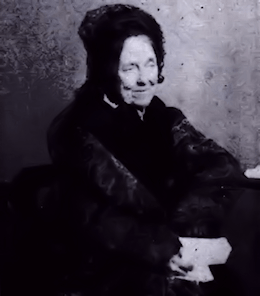Textus Receptus Bibles
Julia E. Smith Translation 1876
| 27:1 | The son of twenty and five years was Jotham in his reigning, and sixteen years reigned he in Jerusalem. And his mother's name Jerushah, daughter of Zadok. |
| 27:2 | And he will do the straight in the eyes of Jehovah, according to all which Uzziah his father did: only he came not into the temple of Jehovah. And the people yet being corrupted. |
| 27:3 | He built the gate of the house of Jehovah the highest, and upon the wall of Ophel he built for multitude. |
| 27:4 | And he built cities in the mountain of Judah, and in the thickets he built fortresses and towers. |
| 27:5 | And he waged war with the king of the sons of Ammon, and he will be strong against them. And the sons of Ammon will give to him in that year a hundred talents of silver, and ten thousand cors of wheat, and barley ten thousand. This the sons of Ammon turned back to him, in the second year, and the third. |
| 27:6 | And Jotham will be strengthened, for he prepared his ways before Jehovah his God. |
| 27:7 | And the rest of the words of Jotham, and all his works and his ways, behold them written upon the book of the kings of Israel and Judah. |
| 27:8 | The son of twenty and five years was he in his reigning, and sixteen years reigned he in Jerusalem. |
| 27:9 | And Jotham will lie down with his fathers, and they will bury him in the city of David: and Ahaz his son will reign in his stead. |

Julia E. Smith Translation 1876
The Julia Evelina Smith Parker Translation is considered the first complete translation of the Bible into English by a woman. The Bible was titled The Holy Bible: Containing the Old and New Testaments; Translated Literally from the Original Tongues, and was published in 1876.
Julia Smith, of Glastonbury, Connecticut had a working knowledge of Latin, Greek and Hebrew. Her father had been a Congregationalist minister before he became a lawyer. Having read the Bible in its original languages, she set about creating her own translation, which she completed in 1855, after a number of drafts. The work is a strictly literal rendering, always translating a Greek or Hebrew word with the same word wherever possible. Smith accomplished this work on her own in the span of eight years (1847 to 1855). She had sought out no help in the venture, even writing, "I do not see that anybody can know more about it than I do." Smith's insistence on complete literalness, plus an effort to translate each original word with the same English word, combined with an odd notion of Hebrew tenses (often translating the Hebrew imperfect tense with the English future) results in a translation that is mechanical and often nonsensical. However, such a translation if overly literal might be valuable to consult in checking the meaning of some individual verse. One notable feature of this translation was the prominent use of the Divine Name, Jehovah, throughout the Old Testament of this Bible version.
In 1876, at 84 years of age some 21 years after completing her work, she finally sought publication. The publication costs ($4,000) were personally funded by Julia and her sister Abby Smith. The 1,000 copies printed were offered for $2.50 each, but her household auction in 1884 sold about 50 remaining copies.
The translation fell into obscurity as it was for the most part too literal and lacked any flow. For example, Jer. 22:23 was given as follows: "Thou dwelling in Lebanon, building as nest in the cedars, how being compassionated in pangs coming to thee the pain as in her bringing forth." However, the translation was the only Contemporary English translation out of the original languages available to English readers until the publication of The British Revised Version in 1881-1894.(The New testament was published in 1881, the Old in 1884, and the Apocrypha in 1894.) This makes it an invaluable Bible for its period.